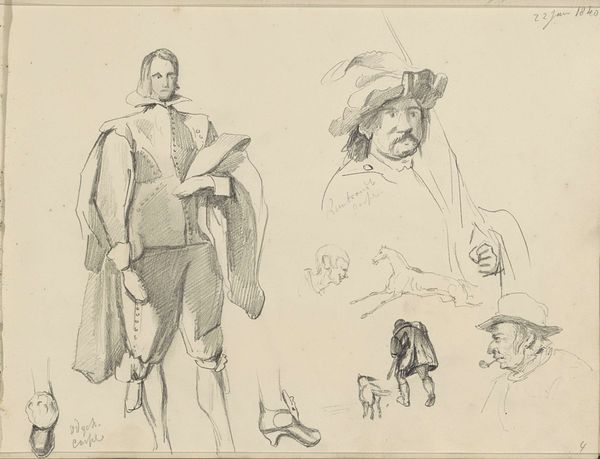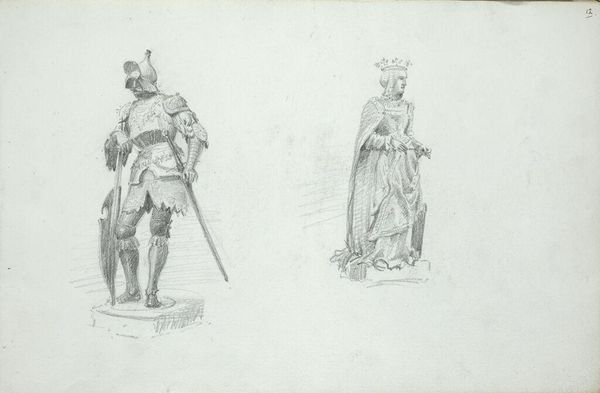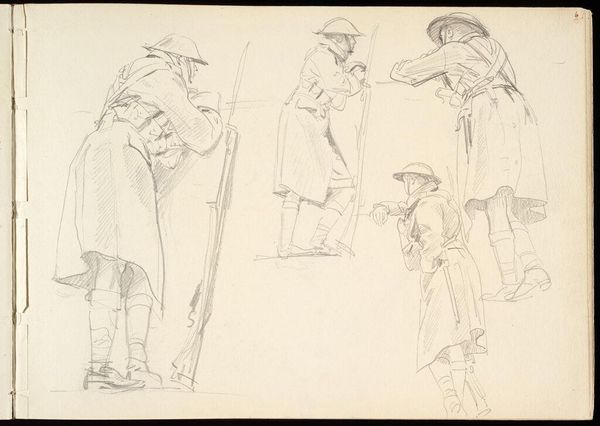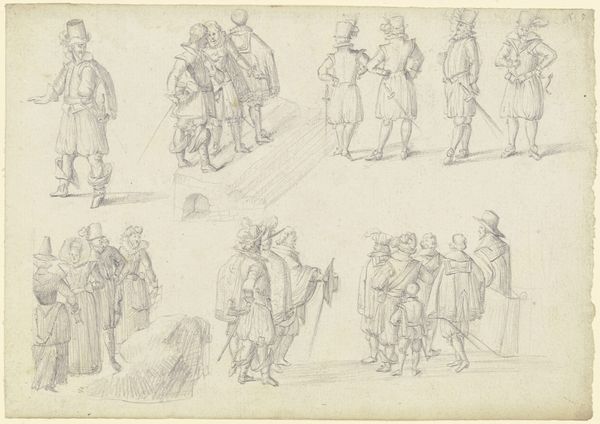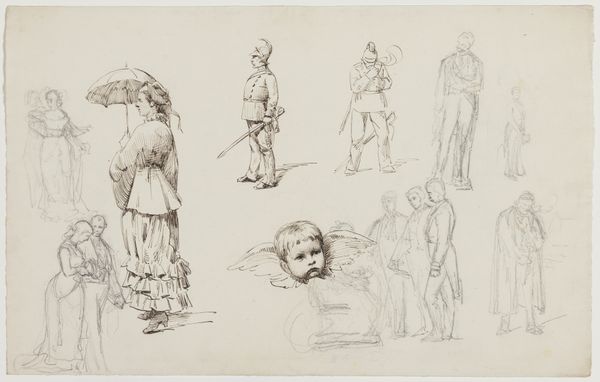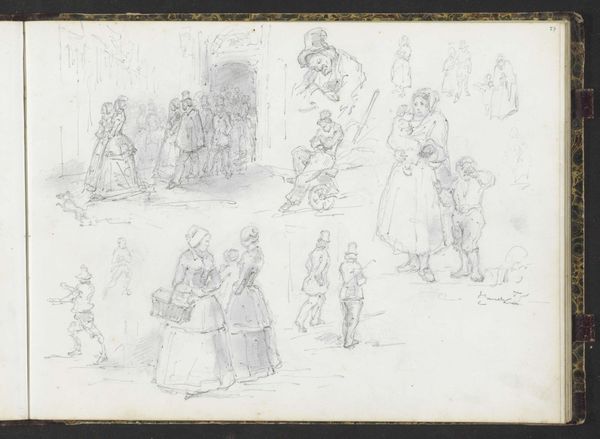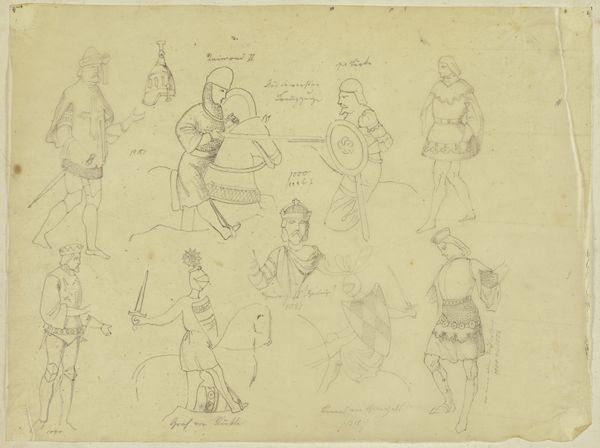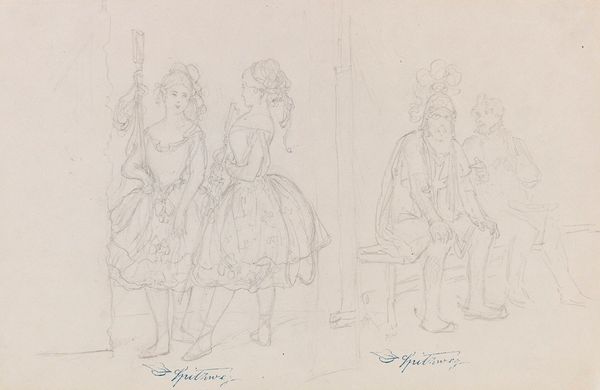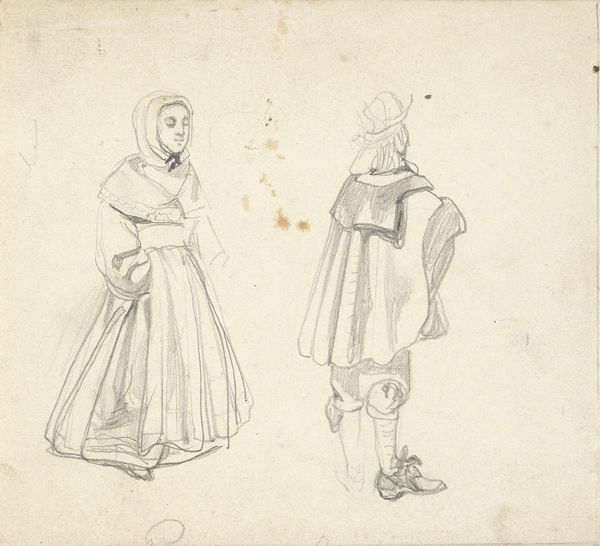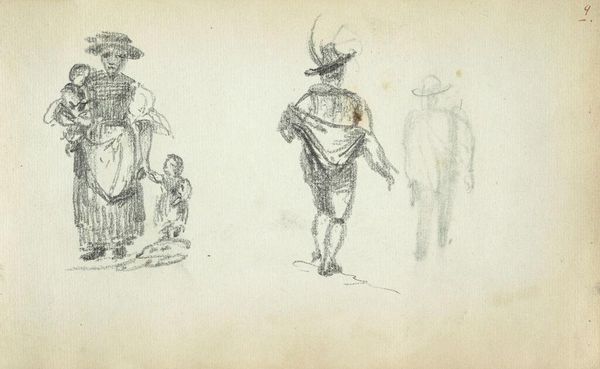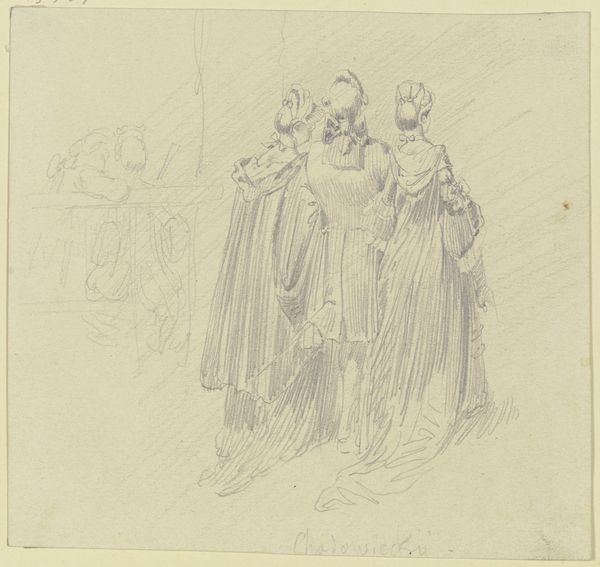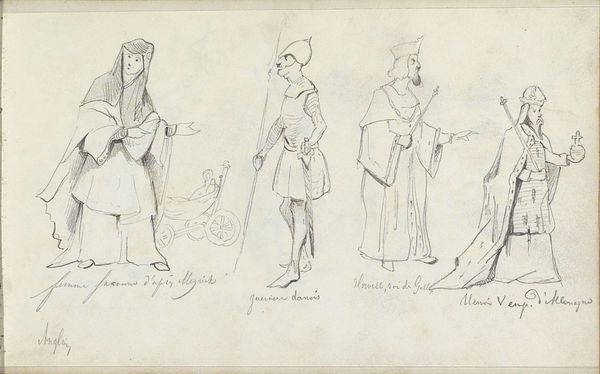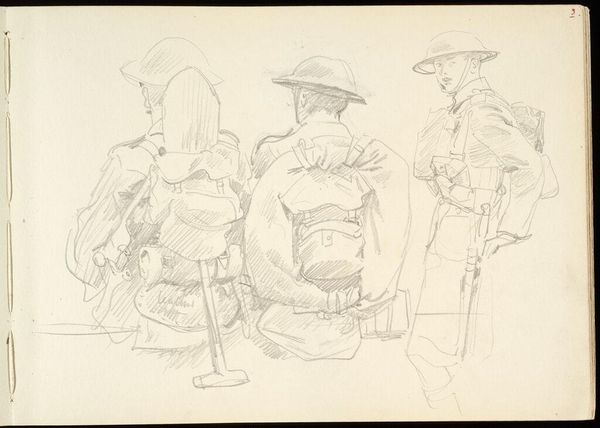
drawing, pencil
#
portrait
#
drawing
#
imaginative character sketch
#
light pencil work
#
pencil sketch
#
figuration
#
11_renaissance
#
personal sketchbook
#
idea generation sketch
#
sketchwork
#
pencil
#
sketchbook drawing
#
pencil work
#
academic-art
#
sketchbook art
#
fantasy sketch
Copyright: Public Domain: Artvee
Curator: Before us is John Singer Sargent's "Study of Six Figures," a pencil drawing from around 1869 to 1871. Editor: My first impression is how ethereal these figures are. It feels like glimpsing a dream, a memory, rendered in delicate lines. Curator: Exactly. Sargent, though later known for his society portraits in oil, honed his skills with sketches like these. Consider the materiality of pencil on paper: it’s a direct, accessible medium, indicative of the artistic process, revealing the artist's hand at work. Editor: I see the artist's hand but what was he seeing in his mind's eye? Look at the figures dressed in historical garb; what role did theater or historical reenactments play in inspiring such costumes at this moment? Did Sargent see the art world moving back towards traditional craftsmanship in reaction to the Industrial Revolution, perhaps? Curator: Good question. This drawing could be seen as part of a larger artistic engagement with history and identity, both in Europe and the United States, shaped by historical revivals in design and fashion and driven in part by nationalistic and imperialist fervor. What impact would images like these have on contemporary political and social discourse, where anxieties surrounding the commodification of labor and artistry was commonplace? Editor: Right. We also can’t ignore the way academies shaped the very concept of art and its dissemination. These sketches showcase Sargent's grounding in academic tradition—studying the human form, mastering line and shadow. Yet he seems also interested in fleeting expressions, rather than perfectly rendered bodies. How did that shape how such art would have been displayed in salons or circulated as prints at the time? Curator: Perhaps such artwork's accessibility as sketches underscores his innovative genius. Sargent's work, including these "idea generation" studies, provides a crucial lens through which we can view the intersection of artistic labour, the materials used, and cultural production during a transformative period. Editor: And it invites us to consider the power of the sketched image, both in its historical context and its continuing resonance today. It seems relevant that the drawings would be accessible and inexpensive because it shows how society’s fascination with persona and dress goes all the way back to at least the renaissance period. Curator: It certainly adds layers to how we see the function and role of image making today. Editor: Indeed. A valuable piece in piecing it all together.
Comments
No comments
Be the first to comment and join the conversation on the ultimate creative platform.
